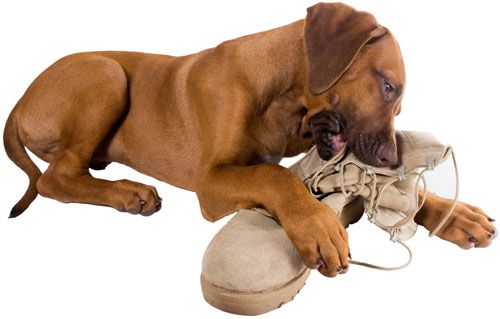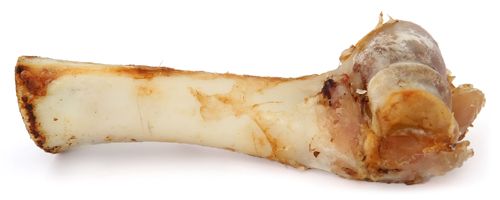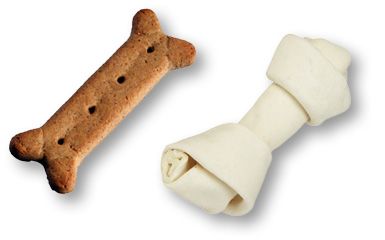Ever wonder why…
Your dog eats your shoes? Snacks on the legs of your table? Chews the corners of your walls?

The answer is nature
The predecessors of our beloved pups derived a balanced diet—fat, vegetable products, protein and minerals—by consuming the meat and bones of the animals they ate. Gnawing was and is an essential activity for a healthy dog. But FYI – always supervise! Watch for splinters, jagged edges and ends that might result in choking.
Think of it this way: Cats lick. Cows chew. Dogs gnaw!
It’s up to us to give our dogs appropriate options for this natural behavior. What’s appropriate? At AAMD we ask the question a different way. We ask, What’s natural?
Bully sticks & beef tendons
Yes! Bully sticks and beef tendons are a satisfying, natural option. Dogs love the give in the chew and the progress they make while consuming them. These gnawables do not splinter. They are easily digestible and soften at the ends to provide a natural source of nutrition. Bully sticks come air-dried and smoked. We recommend air-dried because they are easier on your dog’s digestive system, and not offensive to your sensitive nose. We do not recommend bones processed with chemicals or imported from China.

Bones
Yes! Raw bones are softer, more pliable and filled with nutrition than cooked bones. Cooked bones are brittle—they can break into shards. Just because bones are natural, doesn’t mean we’re off the hook. For voracious chewers, healthy, hard gnawables include knuckle bones, Himalayan chews, elk antlers, cow hooves, and buffalo horns!

Rawhide
A big fat no! Rawhide can be swallowed in chunks that stay in your dog’s stomach for a long time.
Processed bones
Also no! Bones made of fillers and by products are not as desirable as natural options like bully sticks. Not only do these processed bones contain unwanted and unnecessary ingredients, but they crumble. They don’t offer a good gnaw!

More reasons to gnaw!
Bones taste good
Clearly bones taste good, especially raw bones with scrapes of meat.
Nutrition
Canines (and humans) need to balance protein intake with fat. Bone marrow contains more than 50% fat. Bones also contain minerals necessary to sustain life, including Magnesium, Sodium, Copper, Zinc and Iron. Check out the minerals in one elk antler:
One Elk Antler
Protein........ 45% Calcium........ 22% Phosphorous.... 11% Fat............. 1%
Gnawing feels good
Dogs, even small ones, have strong jaws. Sources say that the average Chihuahua has a bite force of 250 pounds per square inch. Rottweilers top out at 328 pounds of bite pressure, German Shepherds at 238 psi, and the American Pit Bull Terrier at 235 pounds of pressure. Nature gave canines the equipment with which to gnaw and crush bones. A toy stuffed with peanut butter is not going to cut it.
Bones are environmentally friendly
Okay, this one is for us humans. Bones come from natural sources. Some like elk antlers, are shed every year and picked off the ground.
Gnawing relieves stress
Like toddlers, puppies explore the world through their mouths. But adult dogs need to chew, too. Gnawing relieves stress and anxiety. Gnawing is nature’s way of cleaning a dog’s teeth. Dogs will gnaw on whatever is available: shoes, furniture, rugs, and legs. It’s up to us, their loving pack leaders, to provide appropriate gnaw options.
Gnawing is a must for a healthy dog
Gnawing gives dogs pleasure, works the muscles in their jaws, cleans their teeth, and releases stress.

Be sure to check out our full supply of healthy gnawables at the Dog Center, including bully sticks, knuckle bones, beef tendons, Himalayan chews, elk antlers, cow hooves, and buffalo horns!
Thanks for this informative post!
Makes so much sense.
Our dog is loving the bully stick we got at your Dog Center after class.